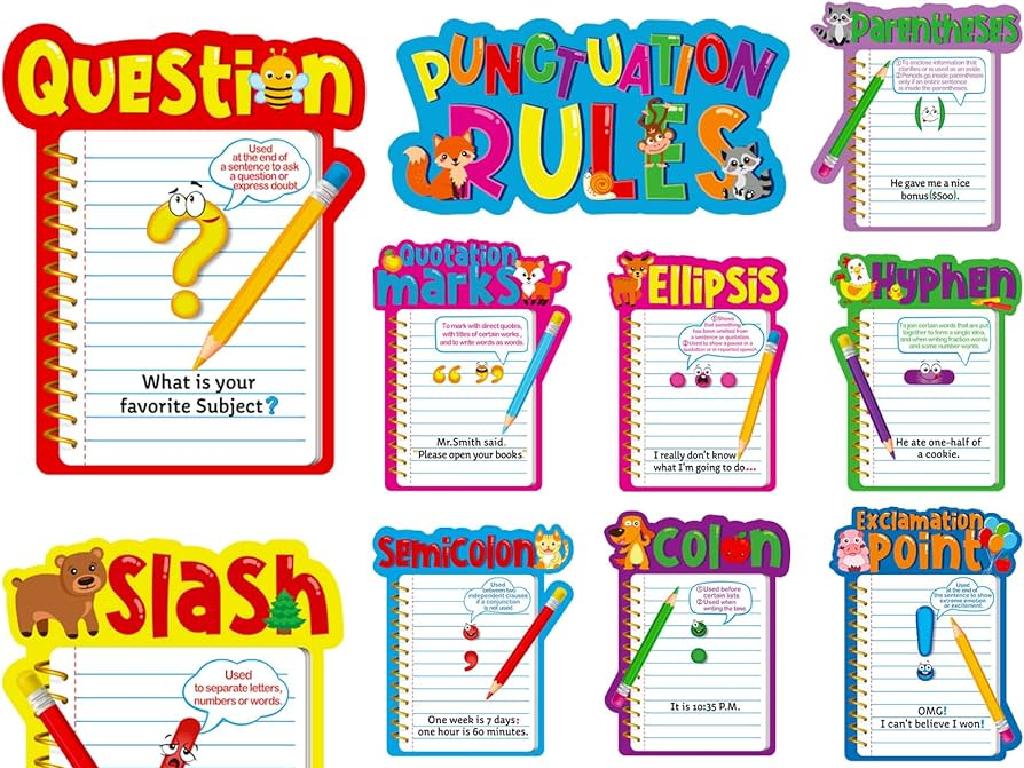The Articles Of Confederation
Subject: Social studies
Grade: Eighth grade
Topic: The Early Republic
Please LOG IN to download the presentation. Access is available to registered users only.
View More Content
The Early Republic: Articles of Confederation
– Explore The Early Republic era
– Foundation of the United States
– The initial steps towards nationhood
– Introduction to Articles of Confederation
– America’s first constitution, adopted in 1781
– Significance in American history
– They laid the groundwork for the current Constitution
|
This slide introduces students to The Early Republic, a pivotal time in American history when the young nation was establishing its identity. Emphasize the importance of understanding the foundation of the United States, which was first formalized through the Articles of Confederation. This document served as America’s first constitution and was crucial in the nation’s development, despite its shortcomings. Highlight that the Articles of Confederation were a stepping stone to the more robust Constitution that governs the country today. Encourage students to think about how these early documents still impact their lives and the functioning of the government.
Exploring The Articles of Confederation
– Definition of the Articles
– The Articles were America’s first set of federal laws.
– First U.S. constitution
– They served as the nation’s constitution from 1781-1789.
– Government’s key features
– Featured a unicameral legislature and limited federal powers.
– Articles’ role in history
|
The Articles of Confederation were the first governing document of the United States, providing a framework for national government after independence. They established a ‘firm league of friendship’ among states, with a national legislature but limited authority to enforce laws or collect taxes. Emphasize the historical context of the Articles, their role in shaping the early republic, and the reasons they were eventually replaced by the U.S. Constitution. Discuss the key features, such as the lack of an executive branch and the requirement for unanimous consent for amendments, to help students understand the strengths and weaknesses of the Articles as a governing document.
Strengths & Weaknesses of The Articles of Confederation
– Early government framework established
– It was America’s first constitution, paving the way for federal governance.
– Sovereignty retained by states
– Challenges under the Articles
– Issues like lack of central power to tax or regulate trade caused problems.
– Push for Constitutional reform
– The weaknesses led to the 1787 Constitutional Convention for change.
|
This slide aims to provide students with an understanding of the Articles of Confederation’s role in American history. Highlight the strengths, such as the initial establishment of a united government and the retention of state sovereignty, which were important to the newly independent states. Discuss the significant weaknesses, including the lack of a strong central government, no power to tax, and the inability to regulate interstate and international commerce. These issues demonstrated the need for a stronger, more effective national government, leading to the Constitutional Convention and the creation of the U.S. Constitution. Encourage students to think critically about how these weaknesses might affect a country and why the founding fathers felt the need to revise this system.
The Structure of Government Under the Articles
– Unicameral legislative body
– Congress was the sole body, no separate executive or judiciary
– National government’s limited powers
– Congress couldn’t tax or regulate trade
– State governments’ significant role
– States held most of the power, with their own laws and currencies
– Balance of power in the federation
|
This slide outlines the structure of the government under the Articles of Confederation. Emphasize the uniqueness of the unicameral legislature, where Congress was the only federal authority, lacking a separate executive or judiciary. Highlight the limited powers of the national government, particularly its inability to levy taxes or regulate commerce, which were significant weaknesses. Discuss the strong role of state governments, which retained most of the power, including creating their own laws and maintaining their own currencies. This led to a loose federation rather than a tightly unified nation. Encourage students to consider the pros and cons of such a decentralized government structure.
Ratification and Implementation of the Articles
– States’ ratification process
– Each state had to approve the Articles, a unanimous decision was required.
– Challenges faced in implementation
– Weak central government led to difficulties in law enforcement and policy making.
– Effects on national unity
– Lack of strong federal power threatened the unity of the new nation.
– State relations under the Articles
– States operated like independent countries, often conflicting with each other.
|
This slide delves into the complexities of ratifying and implementing the Articles of Confederation. Highlight the requirement of all thirteen states needing to agree for ratification, which was a significant hurdle. Discuss the challenges the new nation faced with a weak central government, such as the inability to enforce laws, regulate commerce, or effectively conduct foreign policy. Emphasize how these weaknesses led to issues of national unity, with the federal government having limited power to resolve disputes or unify the states under a single vision. Additionally, explain how the Articles allowed states to retain their sovereignty and independence, which often resulted in conflicts and a lack of cohesive national policy. Encourage students to consider how these challenges set the stage for the eventual creation of the U.S. Constitution.
Case Study: The Land Ordinance of 1785
– Land Ordinance’s success
– It established a systematic process for surveying, selling, and settling land.
– Organizing the Northwest Territory
– Divided into townships and sections for orderly development.
– Lasting effects on land policy
– Influenced future land policies and westward expansion.
|
The Land Ordinance of 1785 was a significant achievement under the Articles of Confederation. It provided a structured method for surveying, purchasing, and settling the Northwest Territory, which included lands that would become Ohio, Indiana, Illinois, Michigan, and Wisconsin. This ordinance divided the territory into townships and sections, which facilitated the sale of land to settlers and speculators, thereby generating revenue for the federal government. The systematic approach to land division set forth in the ordinance became a model for future land policies and played a crucial role in the westward expansion of the United States. Discuss the importance of this ordinance in class, highlighting its impact on American land distribution and its role in shaping the nation’s growth.
Case Study: Shays’ Rebellion
– Shays’ Rebellion: a response to hardship
– Farmers’ protest against economic injustice and debt imprisonment
– Rebellion exposed Articles’ flaws
– Highlighted the lack of federal power to enforce laws or collect taxes
– National government’s response failure
– The Confederation Congress couldn’t form a military response due to limited power
– Impact on the call for a stronger government
– Rebellion influenced the Constitutional Convention for a stronger federal government
|
Shays’ Rebellion was a pivotal event in American history that underscored the critical weaknesses of the Articles of Confederation. It was a direct response to the economic distress faced by debt-ridden farmers who were at risk of losing their land. The inability of the national government to effectively intervene due to its limited powers highlighted the need for a more robust federal system. This case study will explore the causes of the rebellion, the government’s inadequate response, and how this insurrection ultimately contributed to the shaping of the U.S. Constitution. Encourage students to consider how economic pressures can lead to civil unrest and the importance of a government’s ability to respond to such crises.
Toward a New Constitution
– Transition from Articles to Constitution
– The shift to a more robust framework due to weaknesses in the Articles
– Key figures in the Constitutional Convention
– Influential leaders like Washington, Madison, and Hamilton
– Debates shaping the nation
– Major debates included representation, slavery, and federal power
– Creation of a stronger federal government
– The Constitution introduced federal powers like taxation and defense
|
This slide aims to discuss the critical period in American history when the nation transitioned from the Articles of Confederation to the Constitution. Emphasize the inadequacies of the Articles, such as the lack of a strong central government, which led to the need for change. Highlight the key figures at the Constitutional Convention, such as George Washington, James Madison, and Alexander Hamilton, who played pivotal roles in shaping the new government. Discuss the intense debates over state representation, the institution of slavery, and the balance of power between states and the federal government. Conclude with how the Constitution addressed these issues by creating a stronger federal government with the power to tax, regulate commerce, and provide for national defense. Encourage students to consider how these changes impact their lives today.
Class Activity: Creating a Confederation
– Form small groups as states
– Draft an article for our confederation
Consider state needs and how to govern fairly
– Present your article to the class
– Discuss challenges of unity
Reflect on the difficulty of agreeing on policies
|
This activity is designed to simulate the process the original 13 states went through when drafting the Articles of Confederation. By working in small groups, students will get a sense of the negotiations and compromises needed to create a unified set of policies. Each group will represent a state with its own priorities and concerns, which they must consider when drafting their article. After presentations, lead a discussion on the challenges faced during this activity, drawing parallels to the historical difficulties of creating the Articles of Confederation. Possible variations of the activity could include negotiating trade agreements between groups, addressing defense concerns, or managing collective finances.
Reflecting on The Articles of Confederation
– Recap of the Articles’ key points
– First governing document, weak federal government, strong states
– Evolution to the U.S. Constitution
– Constitutional Convention addressed the weaknesses
– Learning from historical challenges
– Understanding past to improve governance
– Significance in modern context
|
This slide aims to summarize the key aspects of The Articles of Confederation and their role in American history. Highlight the transition from the Articles to the Constitution, emphasizing how the shortcomings of the Articles led to the creation of a stronger federal government. Encourage students to reflect on the importance of learning from historical challenges to inform current and future governance. Discuss how these lessons are still relevant today and can help us understand the balance of power between state and federal governments. This reflection will help students appreciate the evolution of our political system and the continuous effort to perfect our union.






